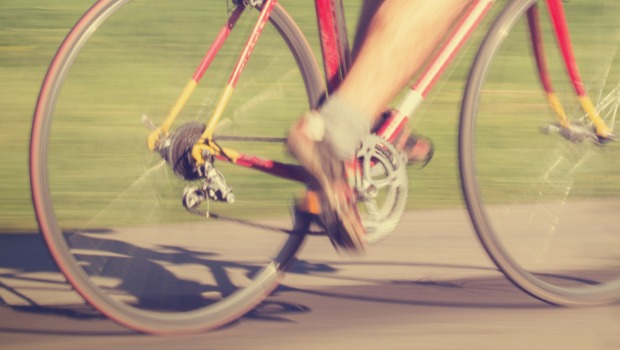
When most cyclists think of bike fit, saddle position and handlebar reach are the first things that come to mind. However, the position of your cleats can make a huge difference in your pedaling efficiency and prevent injury to your lower extremities.
Use these tips to help set up your cycling cleats properly.
Before You Begin
It’s important to remember the position of your cleats is a part of the overall bike fit. To avoid overuse injuries and promote efficient pedaling technique, make sure that the other elements of your bike fit are dialed in as well.
Also, depending on your body type and pedaling motion, you may need to make minor adjustments to your cleat position. The advice in this article is meant to provide basic information for setting up a neutral position.
When setting up your cleats, there are two things you’ll need to consider:
—The fore/aft position
—The cleat angle
The Cleat Angle
How your feet naturally move while pedaling will ultimately determine how much you need to angle your cleats. Since most cyclists will not pedal with their feet pointed straight forward all the time, most manufacturers make pedals with float.
Float allows for some rotational side-to-side movement during pedaling to mimic natural foot movements. The amount of float depends on your brand of pedal, but will generally range from five to 15 degrees. Speedplay pedals are known for large amounts of float, and can range up to 30 degrees.
If your pedal system has float, and as long as your heels don’t move excessively in or out during pedaling, setting your cleats up in a neutral, non-angled position should work fine. If you’re using a fixed pedal system, or one that doesn’t provide rotational movement during pedaling, you may need to make small adjustments that mimic your natural foot position.
An easy way to test whether or not your cleats need angling is to sit on the edge of a table with your feet off the ground. Relax your legs and look down to see if your heels are angled in toward the center of your body or if they assume a neutral position. Make small adjustments from a neutral cleat position to mimic your natural position.
Fore/Aft Position
To set the fore/aft position of the cleat, you’ll first need to locate the ball of your foot. The ball of your foot is the widest part at the base of your big toe.
Once you’ve identified this point, put on your cycling shoe and place a small dot on the ball of your foot with a laundry marker. The goal is to line up the ball of the foot with your pedal axle. If the mark on your shoe is barely ahead of the pedal axle when you are clipped in, your cleat is lined up correctly.
You can also find the proper cleat position by using cleat markers. A cleat marker is a vertical line on the inside of the cleat. Locating the ball of your foot in the same way, line up the cleat marker so that it is just barely behind the mark on your shoe. Once you’ve bolted everything down, clip in and double check the mark on your shoe. If you’ve done it correctly, it should be just forward of your pedal axle.
If you do end up having knee, ankle or foot discomfort, consider getting a professional bike fit. Although it may seem like a rather large investment at first, dialing in your fit can help you prevent injury and make your riding experience far more pleasurable.
 Ready to ride? Search for a cycling event.
Ready to ride? Search for a cycling event.


